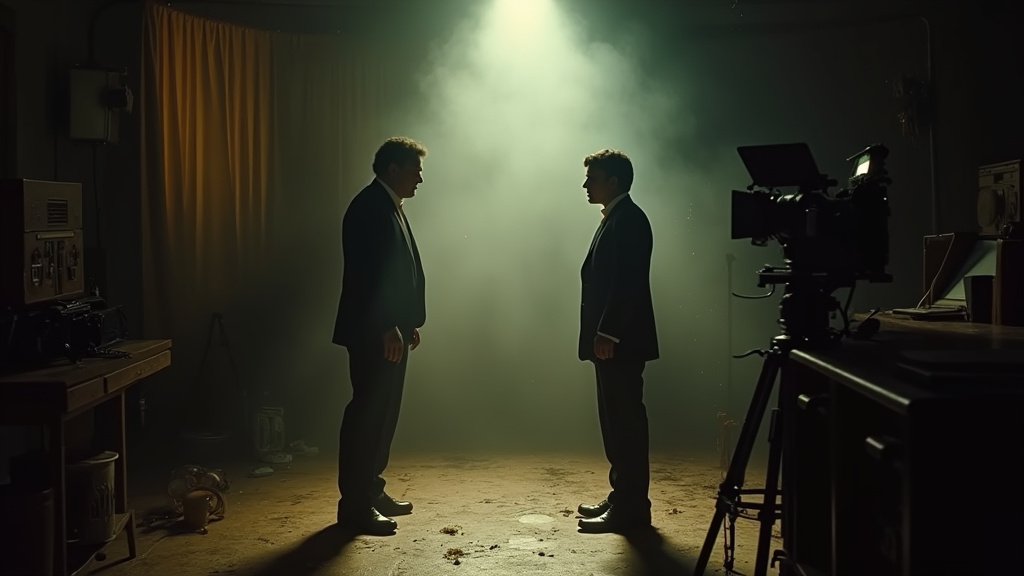IATSE Outlines Core Negotiation Priorities Ahead of 2025
Burbank, CA – The International Alliance of Theatrical Stage Employees (IATSE), the powerhouse union representing a vast coalition of over 160,000 skilled technicians, artisans, and craftspersons vital to the entertainment industry, issued a significant statement today from its Burbank headquarters. While formal contract negotiations are not currently underway, the union proactively detailed its primary concerns and strategic objectives that will form the bedrock of its demands when its current collective bargaining agreement with the Alliance of Motion Picture and Television Producers (AMPTP) approaches its expiration later in 2025.
Key Priorities Revealed: A Blueprint for Future Negotiations
The statement highlights three critical areas demanding substantial improvement for IATSE members:
1. Substantial Improvements in Streaming Residuals: The proliferation of streaming platforms has fundamentally altered content distribution and compensation models. While production volume for streaming has soared, the residual structure, designed for traditional media, has not adequately reflected the value created by this new medium, particularly for below-the-line workers. IATSE seeks a residual formula that provides fair compensation for content viewed on streaming services, ensuring members share equitably in the success of the projects they help create, regardless of the distribution method.
2. Robust Protections Against Potential Job Displacement Due to Artificial Intelligence (AI) Advancements: The rapid evolution of artificial intelligence and machine learning presents both opportunities and significant threats to various crafts within the entertainment industry. IATSE is acutely focused on securing strong contractual language that protects members from job displacement caused by AI technologies. This includes ensuring human workers remain essential in creative and technical processes, establishing clear guidelines for AI usage, and potentially securing frameworks for retraining or compensation if AI automation impacts specific roles like editing, visual effects, sound mixing, set design, and other technical crafts.
3. Increased Contributions to Member Healthcare and Pension Funds: The demanding, often project-based nature of entertainment production can make consistent access to healthcare and secure retirement planning challenging for members. IATSE is prioritizing increased contributions from employers to the union’s health and pension funds. Strengthening these vital benefits is seen as essential for providing members and their families with necessary security and stability in a freelance-heavy industry.
Context and Timing: Signaling Intent Amidst Industry Unrest
The timing of IATSE’s statement is noteworthy, occurring as other major Hollywood unions, including the Writers Guild of America (WGA), continue their negotiations or have recently concluded agreements with the AMPTP. While IATSE’s contract expires in 2025, this strategic communication serves multiple purposes. It publicly declares the union’s core priorities well in advance, providing clarity to both members and employers. It also signals IATSE’s alignment with fundamental issues, such as improved streaming compensation and AI regulation, that have been central to other recent labor disputes in Hollywood.
By outlining these demands now, IATSE is setting expectations and potentially influencing the broader bargaining landscape. It reinforces the interconnectedness of the various crafts and unions within the industry and highlights potential areas of future pressure on the studios and production companies represented by the AMPTP. The statement underscores the union’s commitment to advocating for the well-being and professional future of its diverse membership, which spans over 160,000 skilled individuals across the United States and Canada.
Leadership Stance and Future Preparedness
IATSE International President Matthew Loeb was clear in the union’s stance. While acknowledging that formal negotiations are not immediate – their current agreement runs until later in 2025 – he emphasized the union’s absolute readiness to vigorously pursue these critical demands when bargaining commences. This proactive communication indicates that IATSE is already mobilizing and preparing its strategy for future talks, leveraging the current industry climate to amplify the importance of below-the-line workers’ issues.
President Loeb’s assertion of readiness is a powerful signal to the AMPTP that IATSE will approach the 2025 negotiations with determination and a clear mandate from its members to achieve significant gains. The union’s leadership is keenly aware of the evolving challenges facing its workforce, from the economic shifts brought by streaming to the existential questions posed by artificial intelligence. The statement is a testament to IATSE’s commitment to adapting to these changes while ensuring members receive fair treatment, essential benefits, and protection for their livelihoods.
Conclusion: Setting the Stage for 2025
In essence, IATSE’s statement is more than just a declaration of priorities; it is a strategic move designed to shape the narrative and build momentum for future negotiations. By articulating its core concerns regarding streaming residuals, AI safeguards, and health/pension security, IATSE is setting the stage for a potentially challenging, yet crucial, round of talks in 2025. This proactive approach, issued from their Burbank headquarters, underscores the union’s dedication to fighting for the rights and economic security of its 160,000-plus members, ensuring their vital contributions to the global entertainment industry are appropriately valued and protected now and in the future. The statement serves as a clear indication that the issues being debated in current industry negotiations are not isolated but represent systemic challenges that must be addressed across all crafts and unions working under AMPTP agreements.






